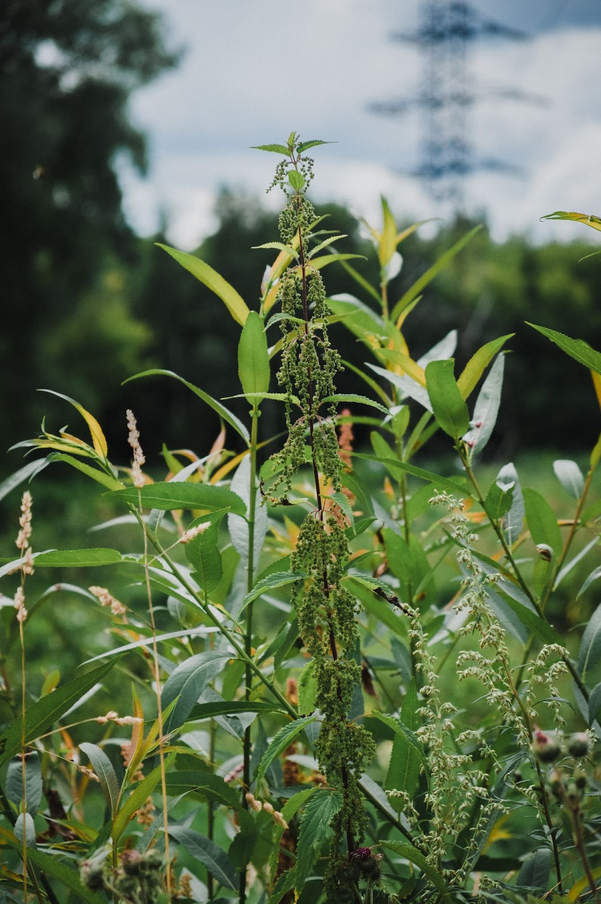
Japanese knotweed (Fallopia japonica) is an invasive plant species native to East Asia but has been introduced to many parts of the world. It is notorious for its rapid growth and ability to spread. It is considered one of the most problematic invasive plant species in the United Kingdom, other parts of Europe, and North America.
Japanese knotweed quickly spread throughout the UK and became a significant problem due to its ability to increase and outcompete native plant species. It also has a deep root system that can cause damage to buildings and infrastructure, making it a severe concern for property owners.
In the 20th century, the plant was further introduced to other parts of the world, including New Zealand, Australia, and Canada, where it has also become a major invasive species.
Despite its negative impact, Japanese knotweed was once celebrated for its beauty and resilience. It was even featured in the Royal Horticultural Society’s 1850 catalogue, which praised its “splendid foliage” and “most interesting and effective” habit.
However, it was only a short time before the plant’s invasive nature was discovered. By the late 1800s, it had spread rapidly throughout the UK, causing damage to buildings and infrastructure. Efforts were made to control the plant, but they could have been more successful.
Today, Japanese knotweed is considered one of the most problematic invasive species in the world. It is difficult to control and can cause significant damage to ecosystems and infrastructure. In some areas, it is illegal to plant or sell the plant, and property owners may be required to remove it at their own expense.
In recent years, efforts have been to find effective ways to control Japanese knotweed, including biological control methods and herbicides. However, plant remains a significant threat to biodiversity and human well-being in many parts of the world.
Identifying Japanese Knotweed
One of the key challenges in dealing with Japanese knotweed is identifying it. It is a perennial herbaceous plant that grows up to 3-4 meters high and can spread rapidly through rhizomes (underground stems). In the spring, the plant produces reddish-purple shoots that can grow up to 2-3 meters high. These shoots are hollow, with distinctive nodes or joints, and have a zigzag pattern. The plant leaves are typically heart-shaped and can be up to 14cm long. They are arranged alternately along the stem and have a distinctive mid-rib.
As the plant grows, it produces clusters of small, cream-coloured flowers, which can be seen from late summer to early autumn. These flowers are followed by small, winged fruits dispersed by the wind.
Another characteristic of Japanese knotweed is its ability to grow through concrete, tarmac, and other hard surfaces, which can cause damage to buildings, roads, and other infrastructure.
Dealing with Japanese Knotweed
If you suspect you have Japanese knotweed on your property, taking action immediately is essential to prevent its spread. Here are some steps you can take to deal with the plant:
- Get a professional assessment: The first step in dealing with Japanese knotweed is to get a professional assessment. This can be done by a qualified surveyor or specialist contractor, who will be able to identify the plant and assess the extent of the infestation. They will also be able to advise on the most appropriate treatment options.
- Chemical treatment: Chemical treatment is one of the most effective ways to control Japanese knotweed. A range of herbicides can be used, including glyphosate and triclopyr. These herbicides can be applied directly to the plant or injected into the stem or root system. Using a qualified contractor to carry out chemical treatment is essential, as using herbicides can be hazardous if not used correctly.
- Digging and excavation: In some cases, digging and excavation may be necessary to remove Japanese knotweed. This can be costly and time-consuming and should only be done by a qualified contractor. All plant material and rhizomes must be removed and disposed of by the relevant legislation.
- Physical barriers: Physical barriers, such as root barriers or geotextiles, can prevent the spread of Japanese knotweed. These barriers should be installed by a qualified contractor and must be designed to prevent any rhizomes from escaping.
- Monitoring and maintenance: Once Japanese knotweed has been treated, it is important to monitor the site for any signs of regrowth. Regular maintenance, such as cutting back vegetation, may also be necessary to prevent re-establishment.
If you want more info, Environet’s guide is pretty good and covers much of what you need.
Legal considerations
In the UK, Japanese knotweed is listed under Schedule 9 of the Wildlife and Countryside Act 1981, which makes it an offence to plant or cause the plant to grow in the wild. This means allowing Japanese knotweed to spread onto other people’s land or into the wild is illegal. Failure to control Japanese knotweed can result in legal action against the landowner.




 POSTED BY
POSTED BY 

